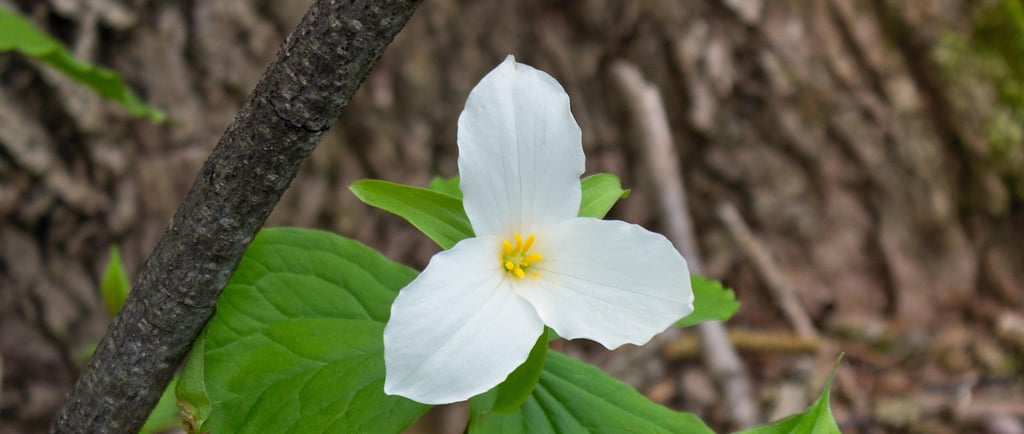☘️ Three Cheers for Trillium 🐜 Ants’ Favorite Snack 🥟
A follow-up story that connects the explorations of Flowers, Seeds, Plant life Cycles, and Ecology Biology Album. 🌿✨ This story invites children into the hush of early spring woodlands, where a quiet flower appears with unseen precision—three petals, three sepals, three leaves. Rooted in folklore and medicine, the trillium has been honored by many cultures for its symbolism of balance and sacred unity, earning names like “Trinity Flower” and “birthroot.” Children are inspired to explore the flower’s unique symmetry, color changes, and mysterious pollinator partnerships. The story also opens a pathway to investigate the fascinating seed dispersal strategy known as myrmecochory—where ants become the gardeners of the forest, carrying trillium seeds underground to sprout in secret. Children are left to wonder: “Which other flowers trust ants with their seeds… and can we spot a trillium bold enough to grow four petals?” 🐜🌼🌲
BIOLOGY STORIES
5/12/20253 min read


Deep in the quiet forest, before the trees are fully dressed in green, something extraordinary happens. A delicate flower peeks through the leaf-littered floor like a secret whispered between roots and sunlight. It’s the trillium 👏 tril 👏 li 👏 um 👏—the threefold wonder of the spring woods. 🌳🌸
Now here’s a secret Trilliums are known for… they love the number three. Three petals, three sepals, and even three leaves—so many of them are perfectly symmetrical in groups of three! 👏 Three 👏 Three 👏 Three 👏 That’s why they’re named Trillium—from “tri,” meaning three. 🌼🌱🌼
Nature always surprises us. A few rare Trilliums break the pattern. They don’t follow the rule of three… they like four! 😲🍀 Their leaves, petals, and sepals sometimes grow in sets of four instead of three. These “four-fans” are special and hard to find.
This unusual flower grow slowly. Very slowly. We have planted seeds and observed many plants grow—like beans that sprout in just a few days, or marigolds that bloom in a couple of weeks! 🌱⏰ But the trillium… it takes its time. It can take seven years from seed to first flower! 🌿⏳ That’s one patient plant. But once it blooms, it’s a sign the forest is waking up, and spring is truly here. ❄️➡️🌼
Look closely: some trilliums have white petals, some pink, and others a deep maroon like forest grape juice.🍇 Each color tells a story, and some change over time—turning from white to pink as the flower ages, like blushing with time.
These gentle woodland flowers are native to North America and parts of Asia, especially thriving in moist, shady deciduous forests. 🍂🌳 They are quiet forest dwellers, living beneath tall trees where they form important relationships with the forest floor. Their seeds don’t float away on the wind like dandelions—instead, they rely on tiny forest helpers: ants! 🐜✨
This special partnership is called myrmecochory 👏 myr 👏 me 👏 co 👏 chory👏 ( muhr-mee-koh-KOR-ee ) —a fascinating seed dispersal strategy where ants carry the seeds underground, tucking them into their cozy tunnels. 🌱🪺 The word comes from the Greek myrmex, meaning ant, and chorein, meaning to spread. So it literally means “ant dispersal”—a clever trick some plants use to get their seeds planted safely in the soil! 🌿🐜
Why do the ants help? 🤔 Because Trillium seeds come with a little treat attached—a soft, fatty structure called an elaiosome 👏 e 👏 lai 👏 o 👏 some 👏. The word comes from Greek: elaion, meaning “oil,” and sōma, meaning “body”—so it literally means “oil body.” 🧈✨ This oily snack smells and tastes like food to the ants. They carry the entire seed back to their nest, eat the elaiosome, and then toss the rest of the seed aside—in their underground compost pile. 🌱🐜💫 And that just happens to be the perfect place for a Trillium seed to begin its slow, quiet journey into a new flower!
🌎Trilliums have long been honored by many cultures too. In Indigenous North American traditions, they were used as medicine—especially the roots. The Cherokee used trillium root in teas to assist childbirth, which is why some people still call it “birthroot.” In folk medicine, it was used to treat wounds and stop bleeding. 🍵🌿 But today, we protect trilliums and never harvest them—many are endangered.
In legends, the Trillium’s threefold pattern was thought to represent harmony, balance, and sacred unity. Some European settlers gave it the nickname “Trinity Flower” for its three petals—connecting it to spiritual symbols of three.
💭 I wonder… What other flowers have parts in threes? What other plants share their seeds with ants with special partnership is called myrmecochory? Can you even spot a Trillium that dares to be different and have 4 petals?
🌿🌸 Let’s go into the woods and look closely…
With Montessori joy,
Vanina 😊

